
Sustainable Parking Design
Growing up, you may have been taught not to judge a person based on outward appearance alone. “It’s what’s on the inside that counts,” many … READ MORE
With our patented "Lift & Run" technology we move on all three axis, making us the industry leader in automotive throughput.
Initiate the process through a NFC, FOB or mobile app. Users keep their keys in this touchless process, making for premium valet experience.
All Robotic Parking Systems can be equipped with EV charging stations as required by the developer. These stations can also be easily added at a later date.
Heavy weight or low profile, our pallet technology allows us to handle vehicles the competition does not.
With a Robotic Parking System the arrival and departure plaza can be easily blended into the overall architectural theme of the development.
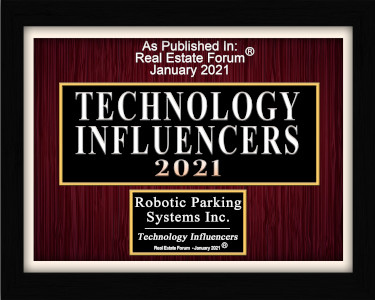
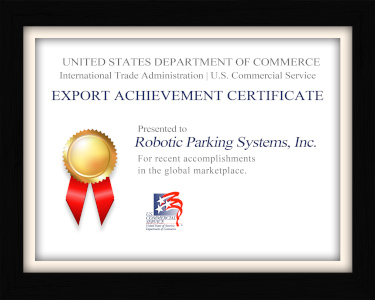
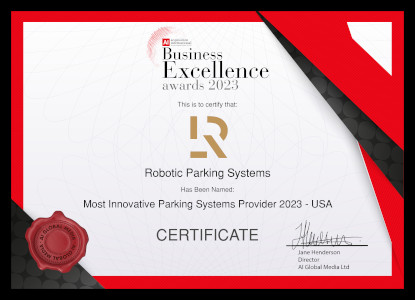

Number of Spaces: 2433
Number of Spaces: 2314
Footprint: 328 ft x 168 ft
Height: 115 ft
Number of Spaces: 765
Footprint: 276 ft x 98 ft
Height: 57 ft
Number of Spaces: 1191
Footprint: 320 ft x 120 ft
Height: 72 ft
Number of Spaces: 314
Footprint: 100 ft x 100 ft
Height: 56 ft
Number of Spaces: 114
Footprint: 97 ft 2 in x 72 ft
Height: 32 ft 5 in

Growing up, you may have been taught not to judge a person based on outward appearance alone. “It’s what’s on the inside that counts,” many … READ MORE
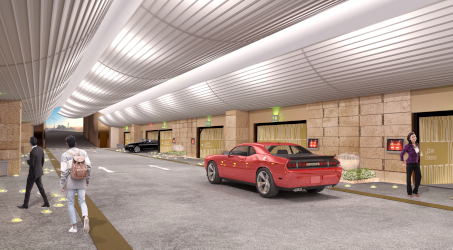
As an inventor and engineer, I have found that the discussion on parking, climate, and land-use misses some important points–points that make the difference on … READ MORE

Recognizing the pressing need to address fire safety in parking garages , Robotic Parking Systems has introduced an innovative solution designed to rapidly contain …READ MORE
Robotic Parking Systems Inc. has built the largest and fastest automated parking garages in the world. As the original US manufacturer, we designed extreme reliability and redundancy into every aspect of the automatic parking. A Robotic Parking System is more economical, greener and safer than any other urban method of parking.

RPS 1000 ‐ The Original Robotic Parking System
The Robotic Parking System is a fully integrated automated parking facility capable of receiving, parking and retrieving passenger vehicles automatically.
All parking operations are performed by multiple independent machines directed by computer programs that execute procedures with no human intervention.
The Robotic Parking System offers:

AutoCAD Sample Layout Files
A Robotic Parking System provides opportunities for more productive land use by reducing the land area used for parking.
To view these files, you'll need AutoCAD or a free AutoCAD Viewer such as DWG TrueView. Click here for Autodesk FREE viewers.
RPS 1000
Our top of the line RPS 1000 automated parking garage can accommodate from 200 to over 5000 parking spaces using half the space of conventional ramp parking.
The Type 1 AutoCAD drawing shows an example of an automated garage using a steel structure.
Download RPS1000-TYPE-1.dwg
Download RPS1000-TYPE-1.pdf
The Type 2 AutoCAD drawing shows an example of an automated garage using a concrete structure.
Download RPS-1000-TYPE-2.dwg
Download RPS-1000-TYPE-2.pdf
RPS 200
The RPS 200 is the perfect solution for sites where only a small area is available at the entry / exit level of the garage.
Download RPS-200.dwg
Download RPS-200.pdf

Architects and developers regularly have to compromise design or reduce revenue-generating space to accommodate required parking. In many cases space is at a premium, and the project can't go forward unless the architect can somehow "create space" to get the parking density needed.
The compact Robotic Parking System is the solution. Minimizing the impact of parking creates more space that can benefit the property as a whole.
Parking for projects or in historic or inner-city districts can be a major challenge. No one wants to see a huge, ugly parking structure that is totally out of character. Instead, with an automated parking garage, you can blend seamlessly into any neighborhood.
The steel or concrete supporting construction of the Robotic Parking System will accept any type of façade. Machinery and equipment are installed inside the supporting structure and never interferes with the façade. This allows a free hand in designing the external appearance of the facility to fit harmoniously into its environment. Entry / exit terminals can also be integrated into the façade environment, while observing both visual as well as functional criteria.

More Green Space – Less Garage Space
Robotic Parking Systems© patented technology provides compact parking from hundreds to thousands of cars. The high-speed, efficient automated parking system ensures that even the largest parking design can be made smaller. The amount of land used affects sustainability issues such as development density and maximizing open space.
Increase Green Space, Reduce Traffic Congestion and Reduce Carbon Footprint
Architects, developers and city planners all want to build projects that improve the lives of people. And, with the emphasis today on green building and sustainable development that also means projects must be environmentally friendly.
Cars and the need to park those cars will always be a part of any city's ecosystem. However, Robotic Parking Systems can contribute to lower impact development.
Robotic Parking Systems is eco-friendly and can help grow greener cities by:
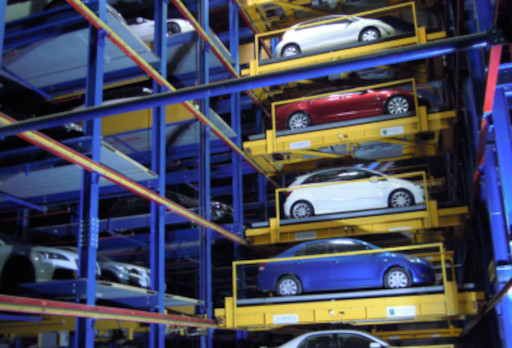
We know that most people have many questions when it comes to this type of project. Here are some of our most common questions, and answers.
How many parking spaces can be built with a Robotic Parking System?
Due to the modular flexibility of the Robotic Parking System, automated parking structures are designed and built from hundreds to thousands of parking spaces. The largest garage built by the company accommodates 2,450 cars with a peak traffic capacity of 720 cars / hr.
How much space can I save by using a Robotic Parking System?
Robotic Parking Systems use an average of 50% less land area for the same amount of parking as compared to conventional concrete ramp style garages. On the basis of volume, the system can provide 2 to 3 times more parking spaces compared to concrete ramps.
How long does it take to build the Robotic Parking System?
The time it takes to build a turnkey Robotic Parking System depends on the size of the project; however, it can typically be completed between 10 to 14 months.
What are the steps needed to build a Robotic Parking System?
In our presentation Manufacturing & Installing a Robotic Parking System, you can follow from start to finish the building of our 765-space garage at the Ibn Battuta Gate complex in Dubai, UAE.

RPS 1000 ‐ The Original Robotic Parking System
The Robotic Parking System is a fully integrated automated parking facility capable of receiving, parking and retrieving passenger vehicles automatically.
All parking operations are performed by multiple independent machines directed by computer programs that execute procedures with no human intervention.
The Robotic Parking System offers:

AutoCAD Sample Layout Files
A Robotic Parking System provides opportunities for more productive land use by reducing the land area used for parking.
To view these files, you'll need AutoCAD or a free AutoCAD Viewer such as DWG TrueView. Click here for Autodesk FREE viewers.
RPS 1000
Our top of the line RPS 1000 automated parking garage can accommodate from 200 to over 5000 parking spaces using half the space of conventional ramp parking.
The Type 1 AutoCAD drawing shows an example of an automated garage using a steel structure.
Download RPS1000-TYPE-1.dwg
Download RPS1000-TYPE-1.pdf
The Type 2 AutoCAD drawing shows an example of an automated garage using a concrete structure.
Download RPS-1000-TYPE-2.dwg
Download RPS-1000-TYPE-2.pdf
RPS 200
The RPS 200 is the perfect solution for sites where only a small area is available at the entry / exit level of the garage.
Download RPS-200.dwg
Download RPS-200.pdf

Architects and developers regularly have to compromise design or reduce revenue-generating space to accommodate required parking. In many cases space is at a premium, and the project can't go forward unless the architect can somehow "create space" to get the parking density needed.
The compact Robotic Parking System is the solution. Minimizing the impact of parking creates more space that can benefit the property as a whole.
Parking for projects or in historic or inner-city districts can be a major challenge. No one wants to see a huge, ugly parking structure that is totally out of character. Instead, with an automated parking garage, you can blend seamlessly into any neighborhood.
The steel or concrete supporting construction of the Robotic Parking System will accept any type of façade. Machinery and equipment are installed inside the supporting structure and never interferes with the façade. This allows a free hand in designing the external appearance of the facility to fit harmoniously into its environment. Entry / exit terminals can also be integrated into the façade environment, while observing both visual as well as functional criteria.

More Green Space – Less Garage Space
Robotic Parking Systems© patented technology provides compact parking from hundreds to thousands of cars. The high-speed, efficient automated parking system ensures that even the largest parking design can be made smaller. The amount of land used affects sustainability issues such as development density and maximizing open space.
Increase Green Space, Reduce Traffic Congestion and Reduce Carbon Footprint
Architects, developers and city planners all want to build projects that improve the lives of people. And, with the emphasis today on green building and sustainable development that also means projects must be environmentally friendly.
Cars and the need to park those cars will always be a part of any city's ecosystem. However, Robotic Parking Systems can contribute to lower impact development.
Robotic Parking Systems is eco-friendly and can help grow greener cities by:

We know that most people have many questions when it comes to this type of project. Here are some of our most common questions, and answers.
How many parking spaces can be built with a Robotic Parking System?
Due to the modular flexibility of the Robotic Parking System, automated parking structures are designed and built from hundreds to thousands of parking spaces. The largest garage built by the company accommodates 2,450 cars with a peak traffic capacity of 720 cars / hr.
How much space can I save by using a Robotic Parking System?
Robotic Parking Systems use an average of 50% less land area for the same amount of parking as compared to conventional concrete ramp style garages. On the basis of volume, the system can provide 2 to 3 times more parking spaces compared to concrete ramps.
How long does it take to build the Robotic Parking System?
The time it takes to build a turnkey Robotic Parking System depends on the size of the project; however, it can typically be completed between 10 to 14 months.
What are the steps needed to build a Robotic Parking System?
In our presentation Manufacturing & Installing a Robotic Parking System, you can follow from start to finish the building of our 765-space garage at the Ibn Battuta Gate complex in Dubai, UAE.









